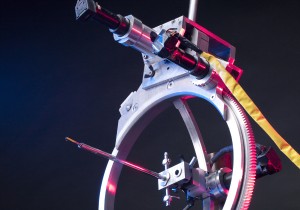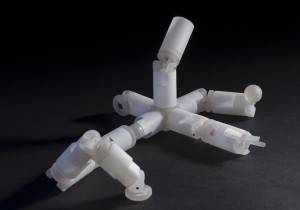The BMJ has just published a whole slew of papers about Tamiflu (oseltamivir) – a key drug in the public health response against swine flu (influenza A/H1N1).
The linchpin is a Cochrane review on the efficacy of neuraminidase inhibitors – namely zanamivir (Relenza; Glaxo Wellcome) and oseltamivir (Tamiflu; Roche) – for preventing and treating influenza in healthy adults. The review found that these two drugs were only partly effective against laboratory confirmed symptomatic influenza (oseltamivir 61% effective; zanamivir 62% effective), and no good at all against asymptomatic flu or flu-like illness.
In addition, Tamiflu did not reduce the risk of influenza-related lower respiratory tract complications – bad news for the Department of Health, which recommends using the drug to prevent secondary complications in healthy adults. The authors conclude: “Neuraminidase inhibitors might be regarded as optional for reducing the symptoms of seasonal influenza. Paucity of good data has undermined previous findings for oseltamivir’s prevention of complications from influenza.”
In an accompanying feature, Deborah Cohen retraces the steps leading to the publication of the Cochrane review and highlights all the difficulties the authors had extracting data from Roche, the makers of Tamiflu. The review “exposed a complex interplay between politics, public health planning, availability of trial data, publishing, and drug regulation.”
Turns out that Roche’s claims that Tamiflu reduces hospital admissions and secondary complications of influenza were based on a 2003 meta-analysis that only included two proper randomised controlled trials and was authored by several Roche employees. When the authors of the Cochrane review tried to get their hands on the data in this paper to include them in their own analysis, they came up against all sorts of obstacles thrown up by Roche.
Peter Doshi, an author of the new Cochrane review, writes in the BMJ of his struggle to get hold of the elusive data and offers a damning verdict on the use of the drug in the swine flu epidemic. “Since August 2009, our Cochrane review team has tried to obtain the data needed to verify claims that oseltamivir (Tamiflu) lowers serious complications of influenza such as pneumonia. We failed, but in failing discovered that the public evidence base for this global public health drug is fragmented, inconsistent, and contradictory. We are no longer sure that oseltamivir offers a therapeutic and public health policy advantage over cheap, over the counter drugs such as aspirin.”
In an analysis article, Nick Freemantle and Mel Calvert look over the observational studies of Tamiflu that Roche cited in defense of their claims for the drug and found that they also do not support the use of Tamiflu to treat influenza in healthy adults. In their discussion they write: “oseltamivir may reduce the risk of pneumonia in otherwise healthy people who contract flu. However, the absolute benefit is small, and side effects and safety should also be considered. None of the studies examined the role of oseltamivir in patients with H1N1 influenza, which may be associated with higher rates of pneumonitis than seasonal influenza.”
Finally, in a linked editorial, Fiona Godlee, editor of the BMJ, and Mike Clarke, director of the UK Cochrane Centre in Oxford, rail against the obstructive techniques used by Roche and call for full data from clinical trials to be made available to the scientific community. “Why should the public have to rely on detective work by academics and journalists to patch together the evidence on such a potentially important drug?” they ask.
All this is bad news for public health planning against swine flu – the Department of Health has already stockpiled more than 30 million doses of potentially useless Tamiflu – and even worse news for Roche.
- For a good summary of the Cochrane review, have a look at the Best Treatments guide on the Guardian website.
———————————————————————————————–
Jefferson T, Jones M, Doshi P, & Del Mar C (2009) Neuraminidase inhibitors for preventing and treating influenza in healthy adults: systematic review and meta-analysis. BMJ 339 DOI: 10.1136/bmj.b5106

 In addition, robots are more accurate and have better dexterity than humans. The reduction in incisions and trauma that can be achieved using surgical machines means a quicker recovery for patients, faster discharge from hospital and a better quality of life after surgery. Robots also produce consistent results and produce few mistakes, if any.
In addition, robots are more accurate and have better dexterity than humans. The reduction in incisions and trauma that can be achieved using surgical machines means a quicker recovery for patients, faster discharge from hospital and a better quality of life after surgery. Robots also produce consistent results and produce few mistakes, if any. Another interesting type of robot that was developed in the 1980s is “master-slave” robots. These robots are used to do remote surgery – that is, to perform procedures when the surgeon and the patient are in different physical locations. The first master-slave robot was called
Another interesting type of robot that was developed in the 1980s is “master-slave” robots. These robots are used to do remote surgery – that is, to perform procedures when the surgeon and the patient are in different physical locations. The first master-slave robot was called  One problem with capsule endoscopy at the moment is that the endoscope flies down the patient’s digestive tract and the doctor has no control over its speed or where its pointing. A doctor could spot a dodgy looking region of the gut but won’t be able to go back and get a good look at it because the endoscope is still heading down and out.
One problem with capsule endoscopy at the moment is that the endoscope flies down the patient’s digestive tract and the doctor has no control over its speed or where its pointing. A doctor could spot a dodgy looking region of the gut but won’t be able to go back and get a good look at it because the endoscope is still heading down and out.